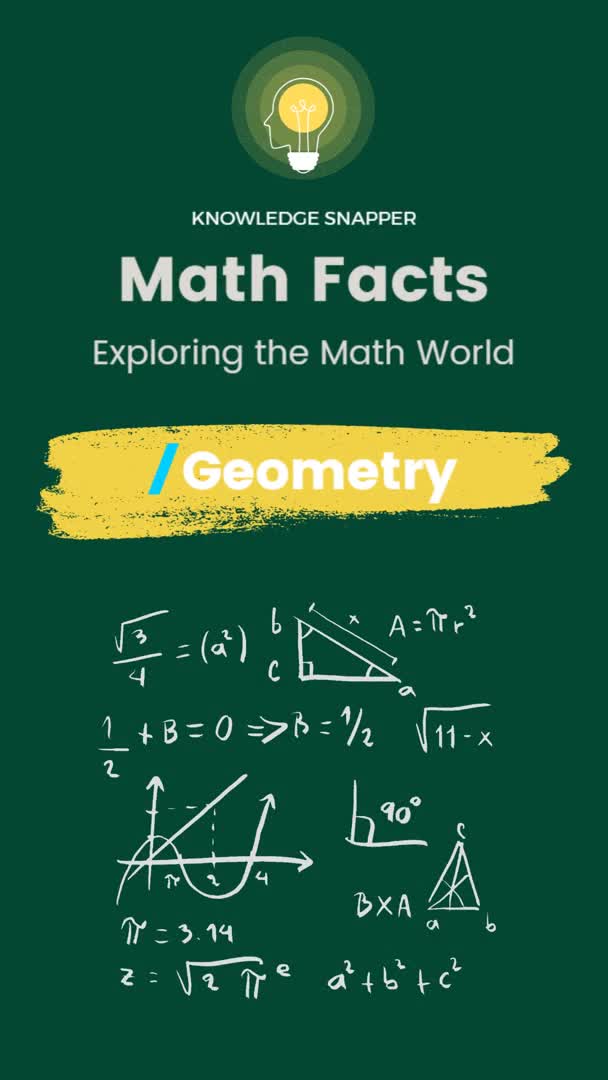Exploring the Fascinating World of Geometry: From Ancient Greece to the Cosmos

Did you know that geometry isn't just about shapes and sizes? It's a field filled with intriguing applications across art, nature, and even space travel. In this blog post, we're diving deep into the world of geometry to uncover five fascinating facts that will expand your understanding and appreciation of this mathematical discipline. Let's embark on this geometric journey together!
The Ancient Greek Foundations of Geometry
Geometry's roots stretch back to ancient civilizations, with the Greeks often hailed as the pioneers. Figures like Euclid, commonly referred to as the "Father of Geometry," set the stage for modern geometry. Through their rigorous logical approaches and comprehensive proofs, the Greeks laid down fundamental principles that continue to influence mathematicians today.
Euclid and His Legacy
Euclid's work, especially his seminal piece, "The Elements," has been a cornerstone of geometric study. This compilation of definitions, postulates, and mathematical proofs has been used as a textbook for centuries.
"Euclid may forever be known as the man who wrote the book on geometry."
Euclid's influence is so profound that many geometrical concepts and theorems bear his name, continuing to be a vital part of mathematical education and exploration.
The Magic of Pi: An Irrational Wonder
One of the most fundamental constants in geometry is Pi (π). Pi represents the ratio of a circle's circumference to its diameter, and it's an irrational number. This means it has a never-ending, non-repeating decimal sequence. For centuries, mathematicians have been captivated by Pi, striving to calculate its value to as many decimal places as possible.
The Enigmatic Nature of Pi
The beauty of Pi lies in its endless nature. Despite being immeasurable in its entirety, a mere fraction of its digits is sufficient for practical applications across various fields such as engineering, physics, and computer science.
Non-Euclidean Geometry: Exploring Curved Spaces
Geometry isn't limited to flat surfaces. The fascinating realm of non-Euclidean geometry ventures into curved spaces, offering insights that challenge our earthly perceptions. This branch of geometry has major implications for our understanding of the universe and plays a crucial role in Einstein's theory of relativity.
Non-Euclidean Geometry and the Universe
Albert Einstein's groundbreaking work on general relativity reveals how the fabric of spacetime is curved by mass and energy, brought to life by non-Euclidean principles. This understanding reshapes our view of gravity and the cosmos, highlighting geometry's role beyond physical shapes.
Geometry in Nature: A Symphony of Patterns
Nature showcases geometry's elegance and efficiency in myriad forms. From the hexagonal perfection of honeycombs to the mesmerizing spirals in shells and galaxies, geometric principles are a testament to the inherent order and beauty of the natural world.
The Honeycomb Conjecture and Spirals
The honeycomb conjecture posits that a hexagonal lattice is the most efficient way to divide a surface into regions of equal area with the least perimeter. Spirals, found in everything from nautilus shells to hurricanes, follow the Fibonacci sequence, illustrating nature's affinity for mathematical harmony.
The Pythagorean Theorem: A Timeless Truth
Perhaps the most recognizable geometric theorem, the Pythagorean theorem, reveals the relationship between the sides of a right triangle. This principle has stood the test of time, being applied for centuries in fields like architecture, engineering, and computer graphics.
Practical Applications of the Pythagorean Theorem
From building bridges to rendering 3D environments in digital media, the Pythagorean theorem remains a critical tool. It enables precise calculations, ensuring structural integrity and visual accuracy across numerous disciplines.
Conclusion: The Endless Wonder of Geometry
The world of geometry is as infinite and intricate as the forms and patterns it helps us understand. From the ancient Greeks to the deepest reaches of space, geometry continues to be a field of exploration and discovery.
So, whether you're admiring the geometric precision of a great architectural wonder or pondering the spirals of a distant galaxy, remember the hidden mathematics that shape our universe. Join us again for another exciting knowledge journey that will further expand your understanding of the world around you!
Stay curious and keep exploring!

.jpg)
Comments
Post a Comment